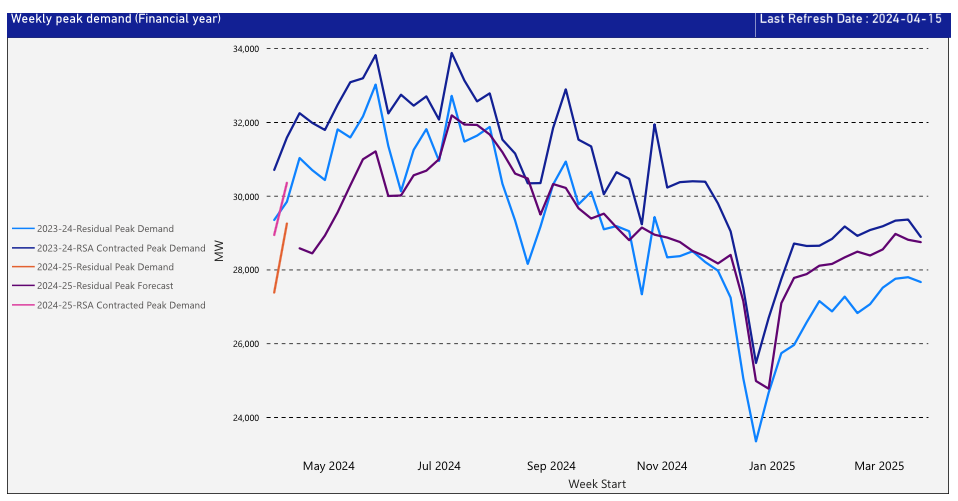- Eskom’s performance over the past three weeks – which has seen no load shedding being implemented – is a result of concerted and deliberate plans by the power utility and government to deal with load shedding.
- This according to South Africa’s Minister in the Presidency for Electricity, Dr Kgosientsho Ramokgopa, who was briefing the media on the implementation of the Energy Action Plan on Monday.
“The kind of progress that we are seeing today is largely as a result of the exceptional work that has been done by the team at Eskom. We are turning the corner and making significant strides to ensure that finally we get to see the back of load shedding. Of course we are not yet out of the woods.
“There’s been significant recovery as a result of the execution of the Generation Operational Recovery Plan…[and]as a result of, first, at the national level, the Energy Action Plan,” he said. Ramokgopa added that there have been “phenomenal improvements in relation to the unplanned capacity loss factor” during the past week.
“We are beginning to see the kind of improvement that we are desiring. The period of March, the Unplanned Capacity Loss Factor [UCLF] – the rate at which we are losing these units, the rate at which these units are not efficient – is coming down.
“The baseline of May [2023], we were sitting at about 18 000MW, we are bringing it down. The average of the week from the 8 to 12 April [2024], we were sitting at about 13 900MW. The week after, again at 14 000MW. Today, we are still at about 13 000MW. We want to maintain that…even bring it sub-13 000MW but it’s a function of a steady, orchestrated and deliberate effort on the part of Eskom,” he said.
The Minister emphasised that although the improvements are commendable, focus is still firmly on the work that still needs to be done.
“We are keeping focus on the bouncing ball, the resolution of load shedding. I must emphasise that in the nature of this space, you are likely to have setbacks. We are still working on the reliability of these machines and that’s why you can’t speak with great confidence that load shedding is behind us.
“We are making the kind of progress that, in many instances, far exceeds where we thought we will be, but we are not yet where we want to be,” he said.
Renewable energy
Minister Ramokgopa highlighted that the Energy Action Plan is also beginning to bear fruit which is exemplified in the contribution of renewable energy projects but at this stage there is no plans to procure excess capacity from contracted independent power producers. When questioned, he said it would only be feasible if there was enough grid capacity.
“We are seeing exceptional performance of renewables. As a result of the reforms that the state has introduced…the contribution of renewables is on the back of state incentives. It’s part of that orchestrated plan. If you go to the Energy Action Plan, outcome number four stated explicitly that part of this Energy Action Plan is to ensure that we accelerate the rollout of roof top solar solutions for both households and industries. This is happening at scale and has resulted in a drop in demand for Eskom supplied electricity.
“When we are out of this load shedding situation, we will still encourage people to rollout rooftop solar solutions because we want to reduce our reliance on fossil fuels and we want to ensure that households, small and large industries contribute to this green transition we have committed to,” he said.
A recent grid survey study carried out by the South African Photovoltaic Industry Association (SAPVIA) and their partners reveals that 13305MW of solar PV and 19572MW of solar PV with battery storage are ‘shovel ready’ (construction ready) or close to it. Read more
Bloomberg NEF expects over 3.5 gigawatts of residential and commercial solar to be added annually from 2023 to at least 2025, or until the electricity supply crisis ends – The South Africa Power Transition Outlook was produced by BloombergNEF in partnership with Bloomberg Philanthropies. Read the full report here.

Eskom weekly peak demand outlook leading up to March 2025. Source: Eskom
Burning gas
Ramokgopa said Eskom was expecting to operate the open cycle gas turbines (OCGTs) it owned, as well as those operated by IPPs, at a far reduced capacity factor than was the case in its 2023/24 financial year. The OCGT’s, traditionally used for emergency back-up power, peak demand shaving and grid stability, have been run hard 24/7 to reduce loadshedding levels. Eskom is forced to buy diesel from fellow government parastatal, PetroSA, at exorbitant prices. As a result, Eskom has overshot its massive R30-billion budget for diesel by R3 billion. Read more
Prospective view
The Minister said the prospects in the immediate future look bright with several generating units coming back online over the next coming months.
“We are on track to recover Unit 4 of Medupi [Power Station] and that will be coming on stream in September of this year. We are on track to ensure that we return – as part of the extension of the life of our only nuclear power station – Koeberg Unit 2…we are confident that we will return it in September 2024. We are confident of synchronising Kusile [Power Station] Unit 6 in October of this year.
“In the next six months, we are going to get an additional 2580MW just on the Eskom fleet. We will continue to ensure that we sustain these efforts of improved performance,” Ramokgopa said.
Author: Bryan Groenendaal














